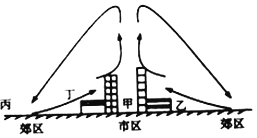Historically, although the children of immigrants may have grown up bilingual and bicultural, many did not pass on much of their parents’ language or culture to their own children. Thus, many grandchildren of immigrants do not speak the language of the old country and are "American" by culture. However, in some parts of the country with established communities that share a common language or culture, bilingualism and biculturalism continue. This is particularly true in communities where new immigrants are still arriving. In general, cultural pluralism (多元化) is more accepted in the United States today than it was in the first half of the 20th century and many of the school systems have developed bilingual programs and multicultural curricula.
At the close of the 20th century, there seemed to be a rise in the consciousness of ethnic groups around the world, and a sense of pride in what makes them unique. This occurs in the United States among many different groups, and in some cases it has resulted in new names to symbolize each group’s identity. In the United States, people have become very sensitive to the language used to describe these groups, and they try to be "politically correct" (P. C. ). For example, many black Americans, particularly young people, prefer the term African-American instead of black, to identify with their African heritage. Some Spanish speakers prefer to be called Latinos (referring to Latin America) instead of Hispanics, while others prefer to be identified by their country of origin (Cuban-American or Cuban, Chicano, Mexican-American or Mexican, and so on).
In spite of some very important differences, however, there is still a tie that binds Americans together. That tie is a sense of national identity—of "being an American" . Incidentally, when citizens of the United States refer to themselves as Americans, they have no intention of excluding people from Latin American countries. There is no word such as United Statesians in the English language, so people call themselves Americans. Thus, what is really a language problem has sometimes caused misunderstandings. Although citizens of Latin American countries may call the people in the United States North Americans, to most people in the United States this makes no sense either, because the term North Americans refer to Canadians and Mexicans as well as citizens of the United States. The word American, then, will be used in this text as the adjective and nationality for the people who live in the United States of America.
This passage is mainly concerned with ()。
A. cultural pluralism in the U. S.
B. African Americans in the U. S.
C. history of immigrants in the U. S.
D. new immigrants in the U. S.

